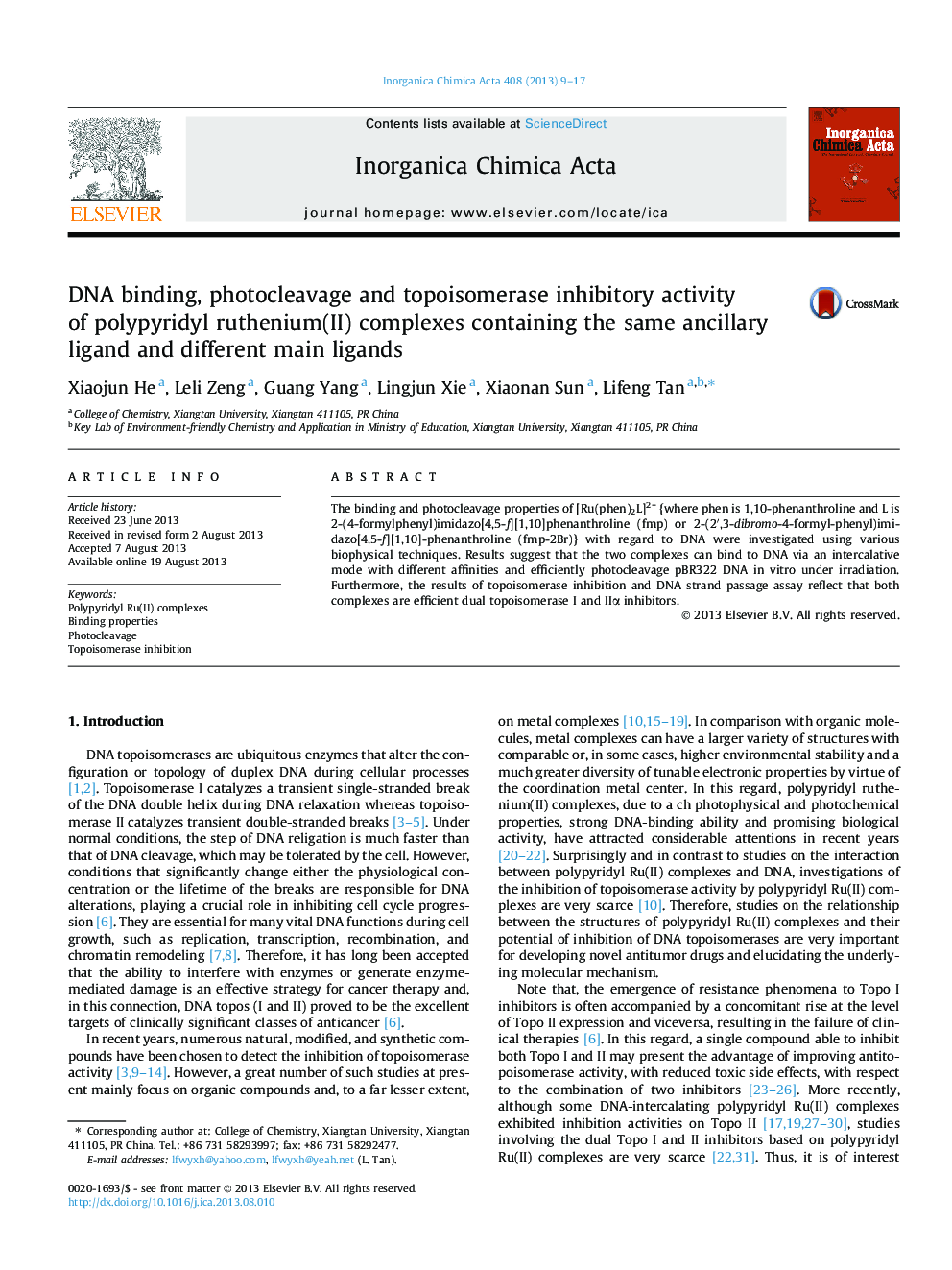| Article ID | Journal | Published Year | Pages | File Type |
|---|---|---|---|---|
| 1310205 | Inorganica Chimica Acta | 2013 | 9 Pages |
•DNA binding, photocleavage and Topos inhibition of two complexes are investigated.•Both complexes bind with DNA via intercalative modes.•Ru1 exhibits more effective DNA cleavage activity than Ru2.•Ru1 and Ru2 are efficient dual inhibitors of Topos I and II.•No clear correlation between the DNA binding and Topos inhibition are observed.
The binding and photocleavage properties of [Ru(phen)2L]2+ {where phen is 1,10-phenanthroline and L is 2-(4-formylphenyl)imidazo[4,5-f][1,10]phenanthroline (fmp) or 2-(2′,3-dibromo-4-formyl-phenyl)imidazo[4,5-f][1,10]-phenanthroline (fmp-2Br)} with regard to DNA were investigated using various biophysical techniques. Results suggest that the two complexes can bind to DNA via an intercalative mode with different affinities and efficiently photocleavage pBR322 DNA in vitro under irradiation. Furthermore, the results of topoisomerase inhibition and DNA strand passage assay reflect that both complexes are efficient dual topoisomerase I and IIα inhibitors.
Graphical abstractResults suggest that Ru1 and Ru2 can bind to DNA via an intercalative mode and efficiently photocleavage pBR322 DNA in vitro under irradiation. In addition, the results of topoisomerase inhibition and DNA strand passage assay reflect that both complexes are efficient dual inhibitors of topoisomerase I and II.Figure optionsDownload full-size imageDownload as PowerPoint slide
